Subscribe & stay up-to-date with ASF
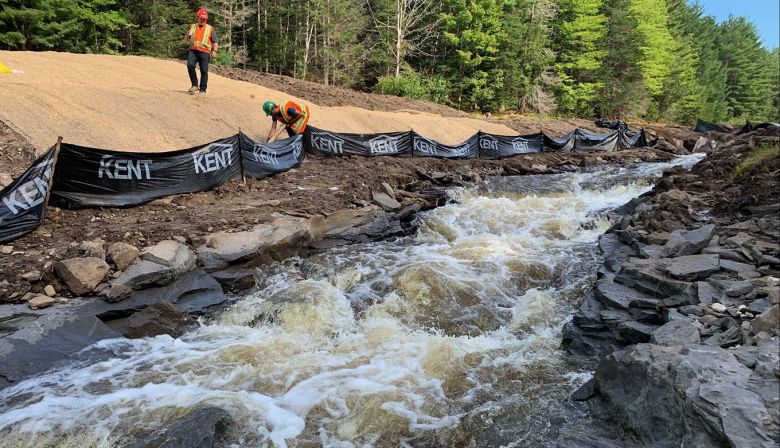
A clear, cool stream cascades down from forests, now connected to the river and the sea in a way it hasn’t been since 1919.
Given its location within Fredericton, it stands a good chance of attracting a small percentage of returning Atlantic salmon plus migrating American eels. It can become again healthy spawning habitat in the years ahead.
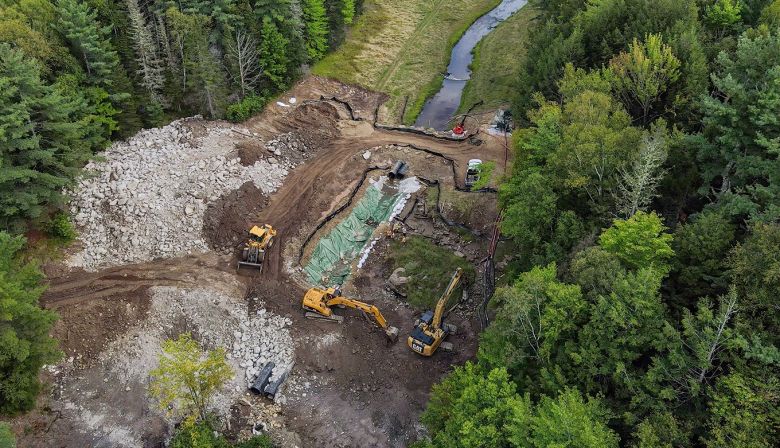
The removal of the Campbell’s Creek Dam was the result of excellent cooperation between many partners, collectively having the goal of improving fish passage.
Beside the delightful news of the Campbell’s Creek Dam in the Nashwaak River watershed, this past week there was the official opening of the bridge across the Petitcodiac. This also would be the official opening of the river, and the permanent end to the infamous gates. Plus on the St. Croix, planning continues for the removal of the Milltown Dam.
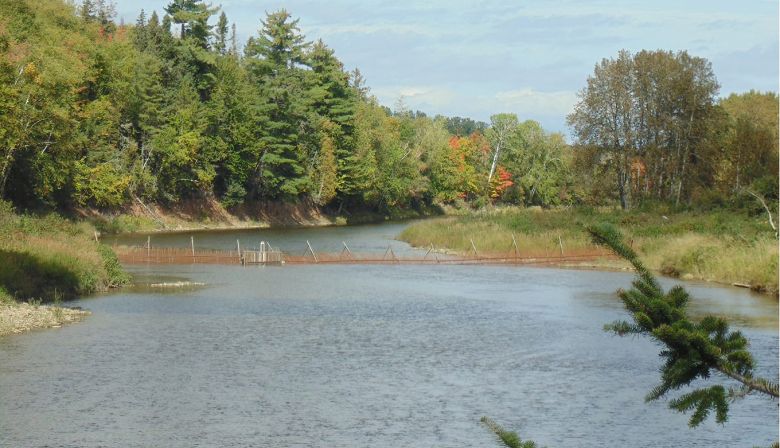
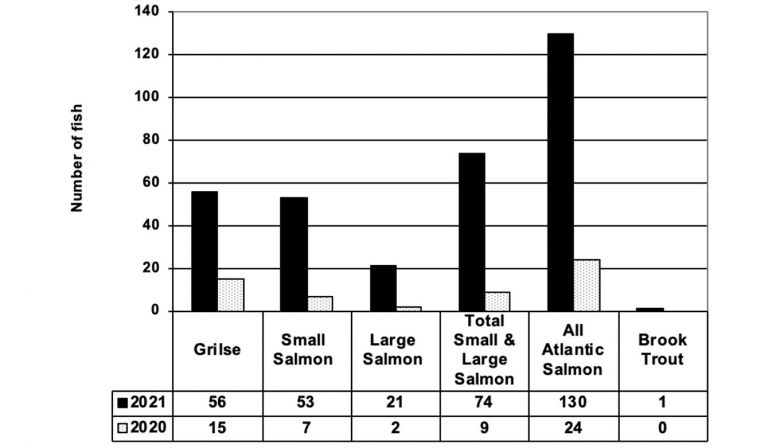
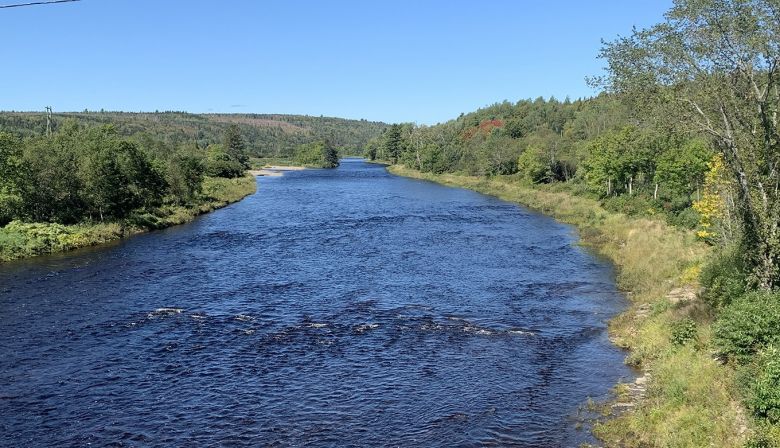
The Sept. 15 numbers are out for the St. John River and Nashwaak. Numbers remain critically low.
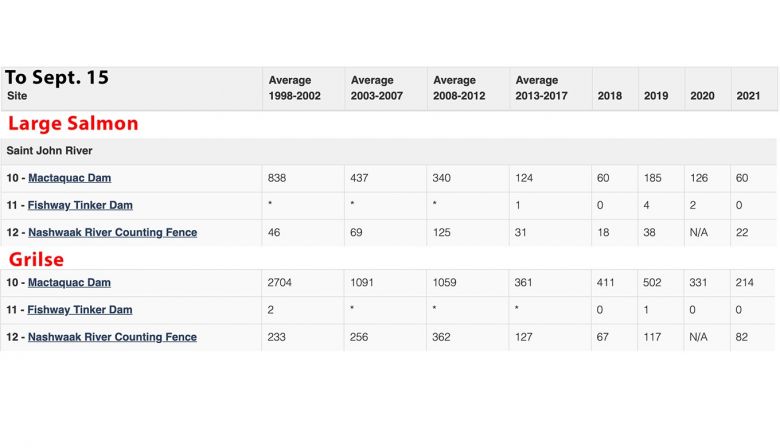
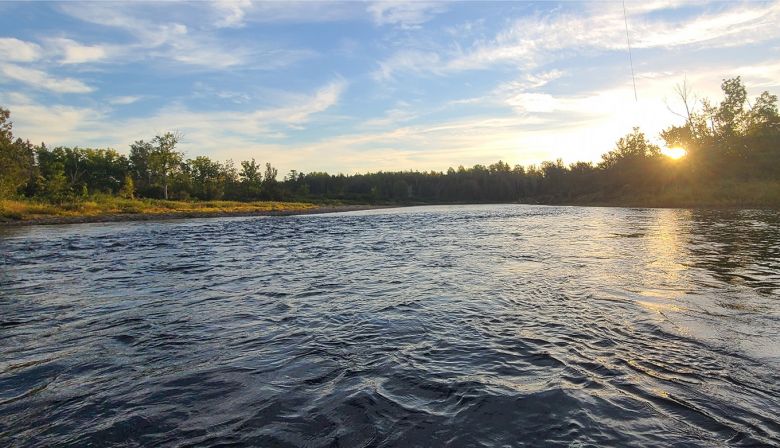
The Sept. 15 counts for the trap nets are out. See below.
Meanwhile, the project to remove the invasive Smallmouth Bass from the Miramichi has been delayed until 2022. Read more
Paul Elson has been “keeping in touch” with the various Miramichi watersheds.
Not much to report, as things are extremely slow.
Any Atlantic salmon that were hanging around moved up in the big raise last week.
There have been very few new fish entering the river this week and things are very quiet.
Water levels and temperatures have been good, just no fish. I’ve seen one grilse in the last week. Hearing the same reports from all over, and hopefully the run starts this week. A few striped bass were caught in the Sunny Corner area as well this week.
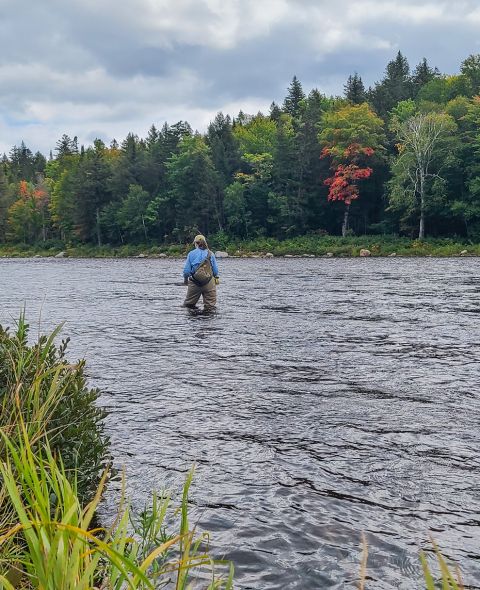
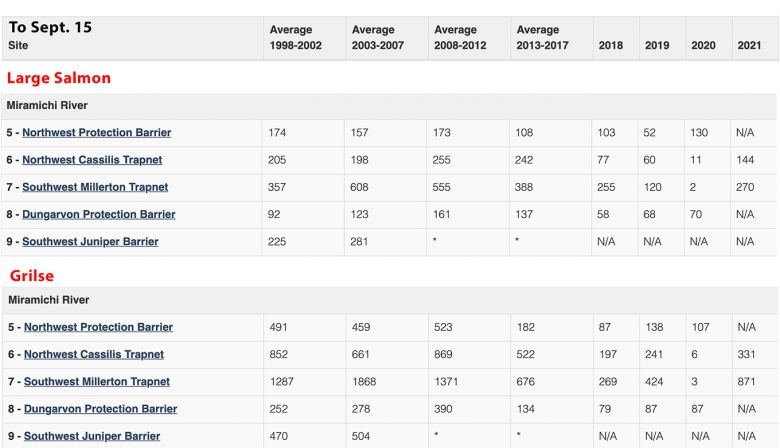
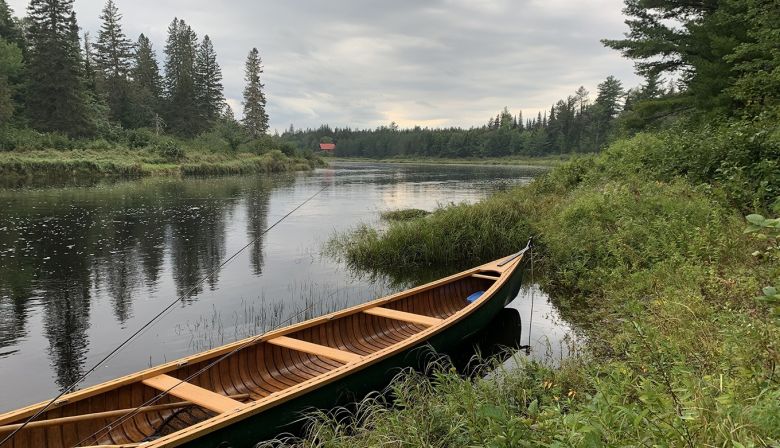
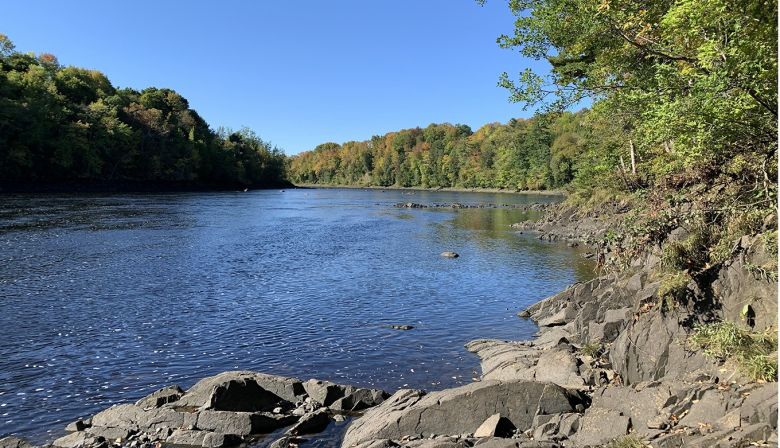
Abby Pond, ASF Regional Director for New Brunswick Programs, writes:
NB Power is in the process of decommissioning and removing the Milltown Generating Station and dam, located at the head of tide on the Skutik (St. Croix) River in St. Stephen, NB/Calais, ME. At this time, they are working through providing additional information requested by the technical review committee in the EIA process with the Province of New Brunswick, as well as regulatory agencies in the US.
This summer, archaeological surveys were conducted in both the US and Canada, in coordination with the Peskotomuhkati Nation. A rare and endangered freshwater mussel survey was also conducted. NB Power is working with the Peskotomuhkati Nation to develop a five-year fisheries monitoring plan – a key piece, as the annual monitoring programs at the Milltown Fishway, of which ASF has been a part, have been essential for understanding and monitoring change in the watershed. The project remains on schedule, pending EIA and permit approval, with onsite work for the decommissioning planned to begin in the summer of 2022. The fishway for upstream passage will be operational in the spring of 2022 then shut down.
The International Joint Commission (IJC) is currently working on a study to improve fish passage at other dams within the lower St. Croix system.
While there has not been a viable Atlantic Salmon population in the St. Croix watershed for decades, efforts to restore the health of the watershed for diadromous fish are beneficial for the ecosystem, creating the conditions for possible returns in the future. Since the re-opening of upstream passage at the Grand Falls D am in 2013, the population of river herring has rebounded from its record low of 900 fish returning in 2002 to 549,847 returning in 2021.(Full counts here) In addition, American shad are returning to the river, with 40 counted this year.
The process of successfully removing impoundments and restoring connectivity builds momentum within New Brunswick to address these issues on other watersheds where salmon populations are struggling and the viability of aging hydroelectric infrastructure is in question.
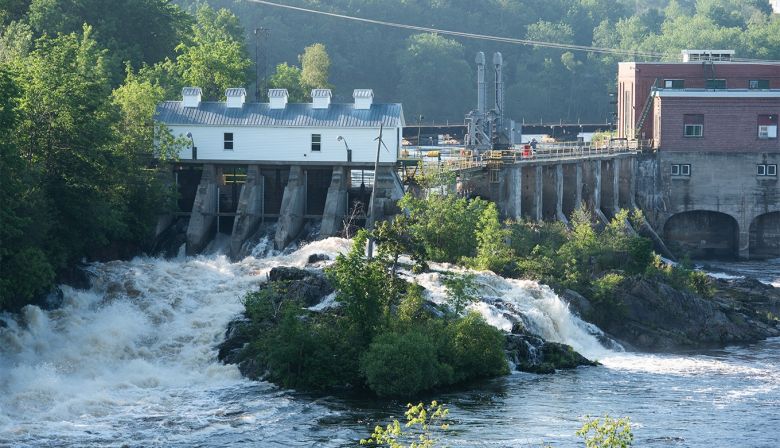
Petitcodiac
While the river has been running freely much of the summer, the official opening of the new bridge between the Moncton and Riverview sides of the Petitcodiac would also mark an official reopening of the river. At one time the watershed supported a run of many thousands of Atlantic salmon. That included the Pollet and other rivers as well.

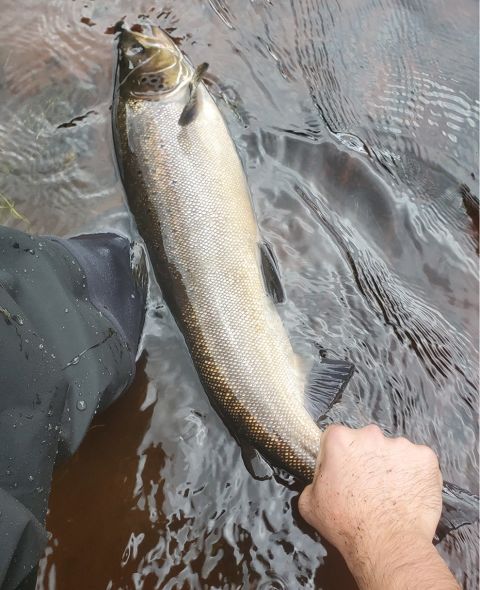
Taylor Main writes:
From accounts I have heard, there aren’t any fresh fish in the river just yet. It doesn’t look like we got any meaningful rain over the weekend and an inch a week from this point on would be greatly appreciated. The first hint of fall foliage is was visible late last week.
Nevertheless, a small number of grilse were taken between late August and early September. I also heard of a single small MSW fish being angled. None of these were fresh fall run fish. Their ancestor could likely be traced back to eggs collected from Rocky Brook (NB), a holdover from the summer run on the Morell and the times of the semi-natural rearing facility at Mooney’s Pond. Back in those days returns upwards of 11 per cent return were not uncommon and in 1994, some 4,000 fish were counted in the river.
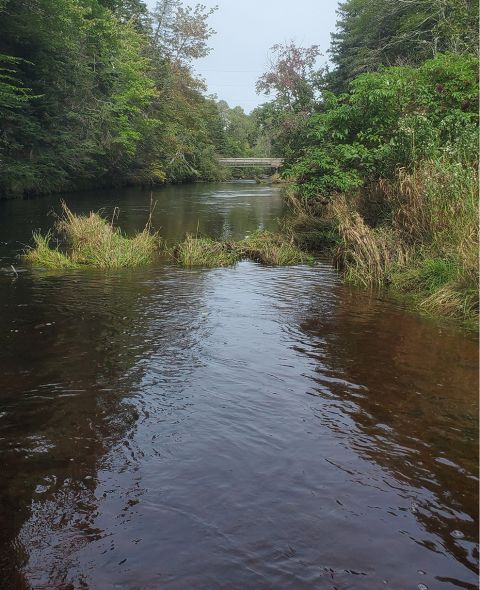
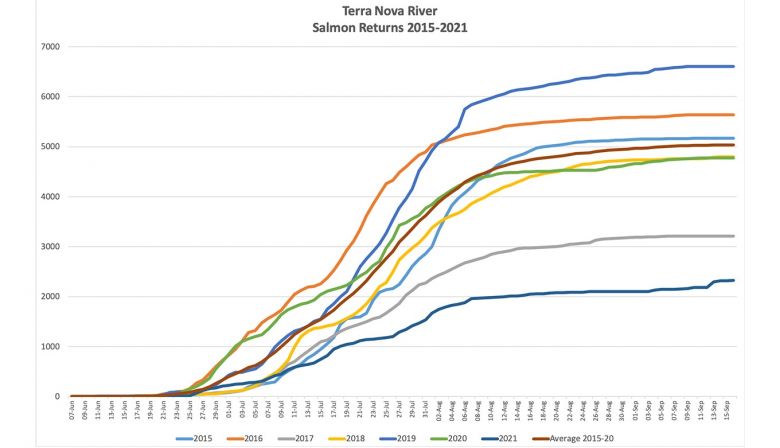
John Baird shared the profiles of the Atlantic salmon runs to the Terra Nova and Middle Brook See charts, and he comments:
The final counts for Terra Nova and Middle Brook are now in.
Water conditions were terrible all summer but Terra Nova return was more severely affected than Middle Brook.
The Terra Nova count is down over 50 per centg from the 2015-20 average and achieved only 25 per cent of the Conservation Requirement.
Middle Brook was down only slightly from 2019 and 2020 and was well over the Conservation Requirement.
DFO allowed an extra week for the count to see if rain from Larry would make a difference. It did a bit, but water is still very low.
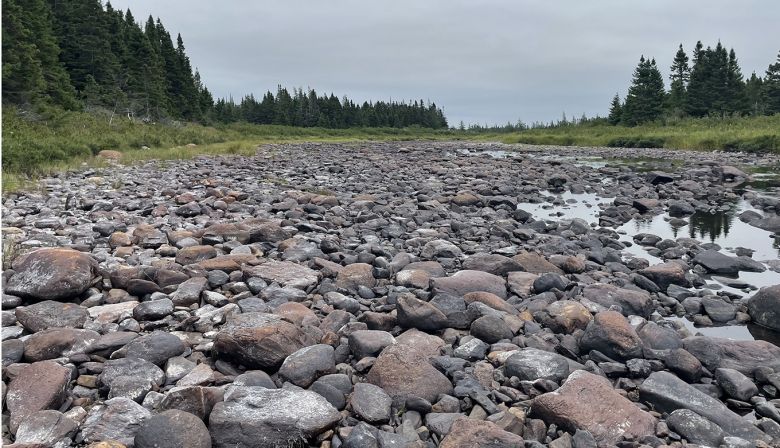
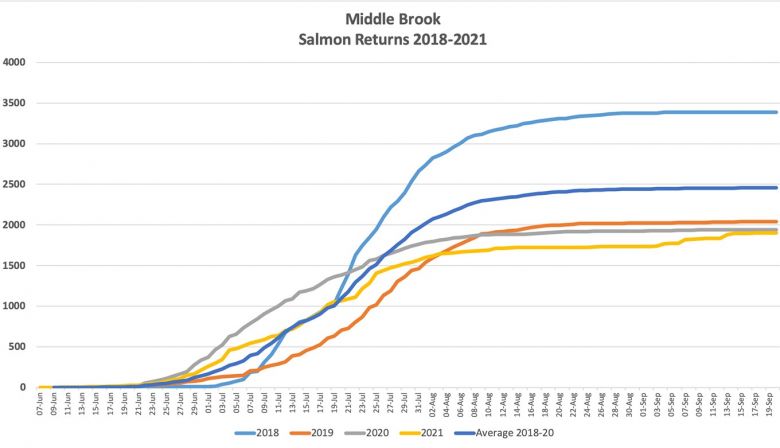
Sept. 16 Low water
https://www.cbc.ca/listen/live-radio/1-56/clip/15866584
Sept. 20 Low water
https://www.cbc.ca/listen/live-radio/1-56/clip/15867244
Don Ivany, ASF Director of Programs in Newfoundland and Labrador, checked on the three rivers still being angled, the Humber, Exploits, and Gander
Heavy rain throughout much of the Province of Newfoundland during the past week was quite timely as it will help tens of thousands of salmon to now reach their spawning grounds, just in time for their annual spawning ritual.
While a few fish may still trickle into a few rivers in the province, DFO has now closed all of their counting facilities for the season.
While 2021 was not exactly a great year in NL it was not a bad year either.
Rather returns to our rivers this year could best be described as average, and a little better than returns in 2020.
As mentioned in my report last week most rivers throughout the province have now been closed to angling.
The exception is the Humber River, Exploits River, and Gander River better known as ‘The Big Three’.
The lower mainstem of these three rivers remain open for catch and release angling only, and officially close on Oct 7. With only these three rivers currently open to angling there is not a lot to report this week.
Lower Humber River
Water levels have dropped back a little on the Lower Humber but are still considered to be too high for good fishing.
SPAWN Director, Scott Grant reports that he fished the Lower Humber one evening this week but didn’t see a fish move. He also reports that during the last two weeks the number of people angling on the Lower Humber has dropped by about 95 per cent of what it was for most of the season. This can be attributed to the fact the water level is a little too high for good fishing, the weather has not been good, and many people have now turned their attention to hunting for both big game and small game.
If water levels continue to drop on the Lower Humber, the river should produce a few fish for the die-hard anglers who continue to fish this time of year.
Lower Exploits River
Heavy rain caused water levels on the Exploits to rise on the Exploits River this past week.
Kim Thompson of ERMA reports that there are very few fish moving through the Lower Exploits River and as of Sept. 18 they stopped operation of the Bishop Falls Fishway on the lower section of the river for this season. She also reports that there are very few anglers fishing currently.
Lower Gander River
Central Newfoundland did not receive as much rain during the past week as did other parts of the province and in fact the water level on the Lower Gander is again dropping slowly.
Like the other two rivers, water temperatures are cold on the Gander now, but fishing conditions are pretty good.
There are still a few anglers on the river and a few fish still around. Brand Street reports that he hooked a few fish at First Pond Bar on the Gander River this past weekend. So, good to know some anglers are still enjoying reasonable success.
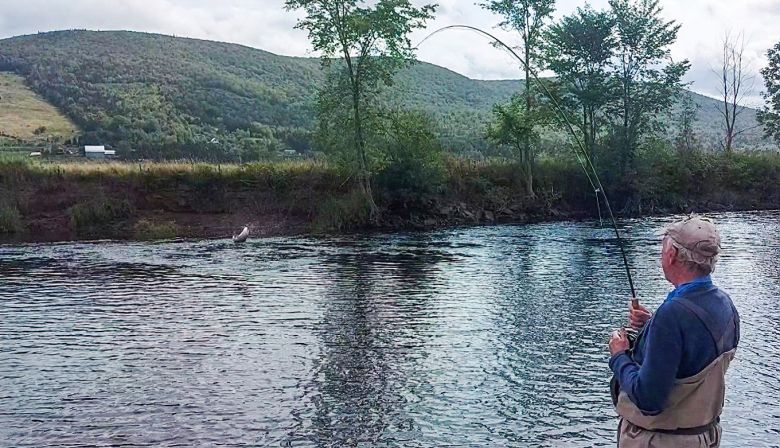
Margaree
Patrick Poirier has been back out on the Margaree, guiding and fishing:
We finally got a decent amount of rain, Saturday night’s rain brought the river up nicely.
With the new water levels there are some fish on the move. Atlantic salmon that had moved in earlier now headed upstream, and new fish have been entering the Margaree from the ocean.
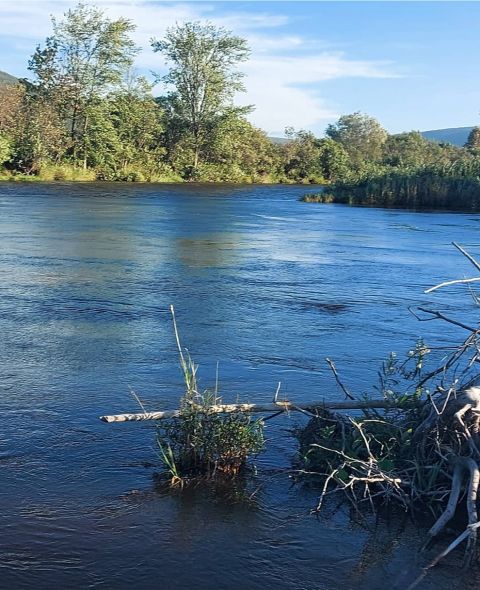
There have been reports of a few Atlantic salmon being hooked, up and down river.
As of Tuesday, water levels were prime, and my daughter Ava and I witnessed a few fish moving up through the pool.
One can only hope that present levels will last long enough until the next rain comes to maintain good water levels.
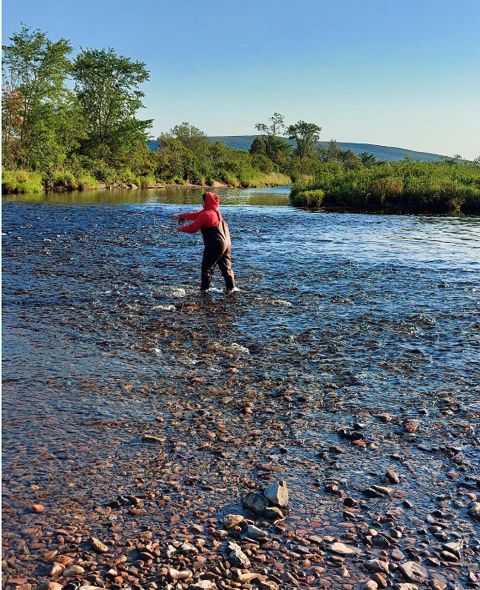
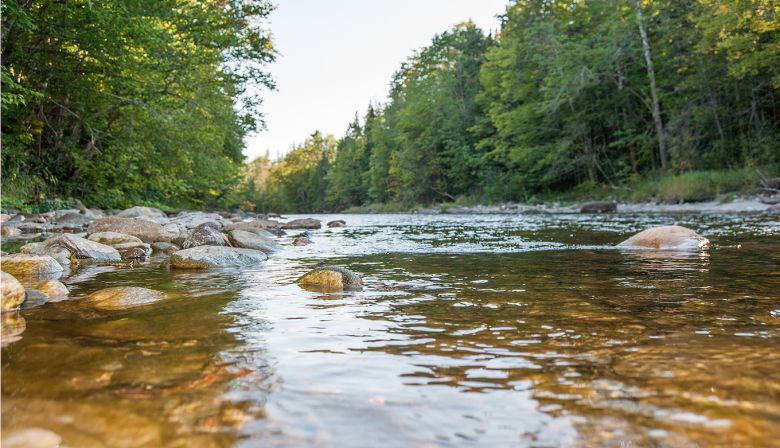
Kris Hunter, ASF Director for Programs in Nova Scotia and Prince Edward Island, says:
Over the past few weeks I have been reaching out and chatting with Atlantic salmon fishermen from across the province to hear how the seasons were going.
The general consensus has been that this summer fishing has been pretty good. Timely rains and breaks in the hot weather meant that most rivers were able to hold enough water and stay cool enough to keep the fish fresh and active. Some fishermen reported hooking into personal record numbers of fish this year, which goes to show that when conditions are good fishing in NS can be some of the very best.
This week I got a chance to tour around Cape Breton and get a bit to get more of a first hand account.
What I saw reaffirmed what I had been seeing posted online and what I heard in discussion with anglers. While most systems have been relatively good they need a good freshet of rain to draw in the fall runs. Systems like the Margaree are getting a few fish come in but this has mostly been in dribs and drabs. I spoke with a dozen different anglers and most of the fish that they were hooking were not “fresh” fish. The few systems that did significant rain, unfortunately got it as very intense storms that dropped a lot of rain over a very short rain resulting in the river blowing out.
One of the interesting things that I have seen and heard from fishermen is that they are not seeing the number of salmon jumping in the estuary that they have in the past. This has not translated into a lack of fish in the system for those that have been getting fish in so perhaps this is because temperatures have been cooler than they have the last few years.
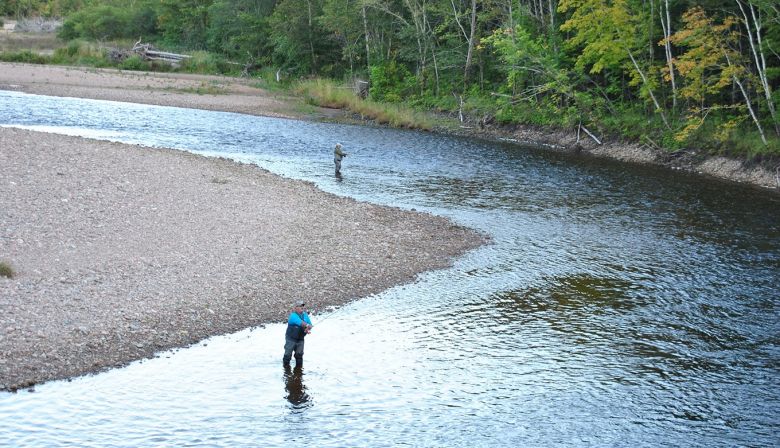
Charles Cusson, Directeur des programmes au Québec :
Les débits se sont calmés considérablement depuis les pluies abondantes du début de septembre qui a causé une amélioration des conditions de pêche en Gaspésie et dans le Bas-Saint-Laurent. D’après les informations du site de météo média, il semble que dame nature sera au travail encore une fois avant la fin de la saison du 30 septembre. Alors, saumoniers et saumonières, à vos perches, car l’hiver est long…
Tight Lines!
Les données utilisées dans ce rapport proviennent de divers sites web, des médias sociaux et des sources gouvernementales québécoises. Les informations peuvent changer sans avis au préalable en ce qui concerne les comparatifs des saisons précédentes.
Rivières York, Dartmouth et Saint-Jean
Voici les résultats affichés au 12 septembre sur le site de la Zec Gaspé jusqu’à ce jour en 2021.
York 591 captures (incluant les remises à l’eau) 4 803 jours-pêche (3 833 en 2020)
Dartmouth 217 captures (incluant les remises à l’eau) 1 380 jours-pêche (1 131 en 2020)
Saint-Jean 172 captures (incluant es remises à l’eau) 741 jours pêche ( 671 en 2020)
En date du 20 septembre, 2 296 poissons, dont 946 saumons et 1 350 petits ont franchi la passe migratoire.
La Matane se comportait mieux en date du 21 septembre 2020, un total de 2 666 poissons avaient migré par la passe migratoire dont 1 653 saumons et 1 013 petits. C’était le meilleur rendement depuis 2016.
Comparativement au 22 septembre 2019, lorsqu’un total de 1 930 poissons avait été dénombré (1 213 saumons et 717 petits).
Pour ce qui a trait des captures, 825 ont été déclarés, dont 195 saumons et 172 petits relâchés en plus de 50 saumons et 408 petits récoltés cumulativement pour la saison 2021 au 20 septembre 2021.
Au 21 septembre 2020, les pêcheurs sportifs avaient signalé la capture de 846 poissons dont 274 saumons et 99 petits relâchés en plus de 158 saumons et 315 madeleineaux récoltés.
Jusqu’au 22 septembre 2019, 686 poissons avaient été capturés, dont 225 saumons et 47 madeleineaux relâchés, 131 saumons et 283 madeleineaux capturés.
Rivière Matapédia
Cette saison, les saumoniers et saumonières ont déclaré la capture de 755 poissons, dont 385 relâchés et 370 récoltés au 20 septembre.
Cumulativement, les pêcheurs ont signalé la capture de 1 350 poissons au 21 septembre, dont 810 relâchés et 540 récoltés.
Les résultats de la pêche au 22 septembre 2019 indiquaient que 1 199 poissons avaient été capturés, dont 744 saumons relâchés et 455 petits récoltés.
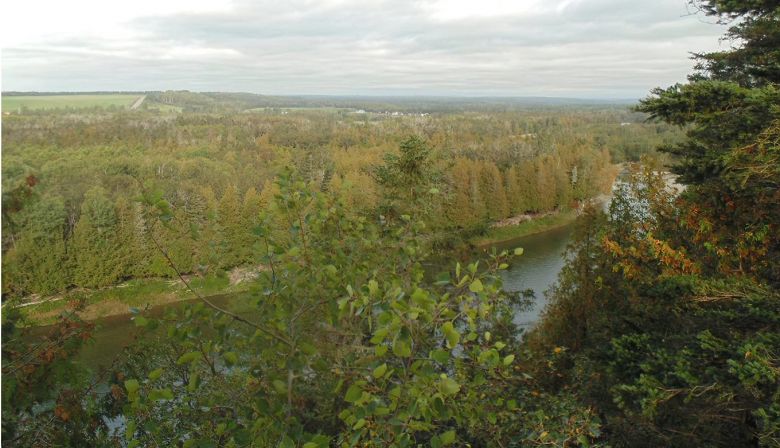
Au 18 septembre 2021 jusqu’à ce jour, 1 210 poissons ont été déclarés capturés par les pêcheurs sportifs dont 760 saumons remis à l’eau et 450 petits récoltés.
Cumulativement au 19 septembre 2020, 1 034 poissons ont été capturés (720 saumons relâchés et 314 petits récoltés). En 2019, cumulativement au 14 septembre, les pêcheurs sportifs avaient capturé 961 poissons, dont 771 saumons relâchés et 190 petits récoltés.
Comparativement à pareille date en 2018, 1 307 poissons ont été capturés dont 882 saumons relâchés et 425 madeleineaux capturés.
Rivière Madeleine
Depuis le 16 septembre, la passe migratoire a cessé ses opérations pour la saison 2021. À ce jour, 781 saumons et 856 petits ont franchi la passe migratoire pour un total 1 637 poissons. Comparativement à la saison 2020 lorsque 1 745 poissons (922 saumons et 823 petits) furent comptés par le biais de la passe migratoire.
The high water and flow conditions have calmed down since the heavy and early September rains have improved angling conditions in the Gaspésie and Lower Saint-Lawrence regions. According to the weather network predictions, Mother Nature will be at work once again before September 30th. Our winter is long, so, Salmon anglers, get out there and enjoy the last days of the season!
Tight Lines!
The data used for the Quebec River notes are sourced from various river websites, social media, and Quebec government sources. Information can change without prior notification regarding prior year comparative figures.
York, Dartmouth, and Saint-Jean Rivers
Please find listed below the latest cumulative statistics to September 5th which appear on the Zec Gaspé website.
York 591 captures (including releases) 4,803 rod days (3,833 in 2020)
Dartmouth 217 captures (including releases) 1,380 rod days (1,131 in 2020)
Saint-Jean 172 captures (including releases) 741 rod days (671 in 2020)
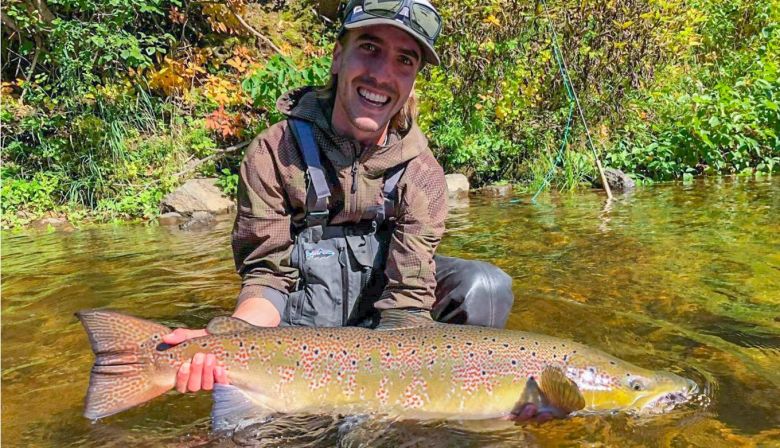
Rivière Matane River
To September 20th, 2,296 fish, consisting of 946 salmon and 1,350 grilse have been counted through the fishway since June 15th 2021.
With nine days left in the 2020 season as of September 21st, a total of 2,666 fish had migrated through the fishway (1,653 salmon and 1,013 grilse). Best total since 2016.
With eight days left in the 2019 season as of September 22nd, a total of 1,930 fish had been counted (1,213 large salmon and 717 grilse).
On the angling side, 825 fish have been reported landed to September 20th, consisting of 195 salmon and 172 grilse released, as well as 50 salmon and 408 grilse harvested.
In 2020, to September 21st, 846 fish had been landed (274 salmon and 99 grilse released in addition to 158 salmon and 315 grilse harvested.
To September 22nd, 2019, 686 fish were reported landed comprised of 225 large salmon and 47 grilse released, 131 large salmon and 283 grilse harvested.
Matapedia River
This season, anglers have reported landing 755 fish (385 released and 370 harvested) to September 20th.
Anglers had landed a total of 1,350 fish to September 21st, 2020, of which 810 were reported released and 540 harvested. Breakdown of the number of salmon and grilse harvested should be available later in October.
Reported angling results to September 22, 2019 indicated 1,199 fish had been landed comprising of 744 large salmon released and 455 grilse harvested.
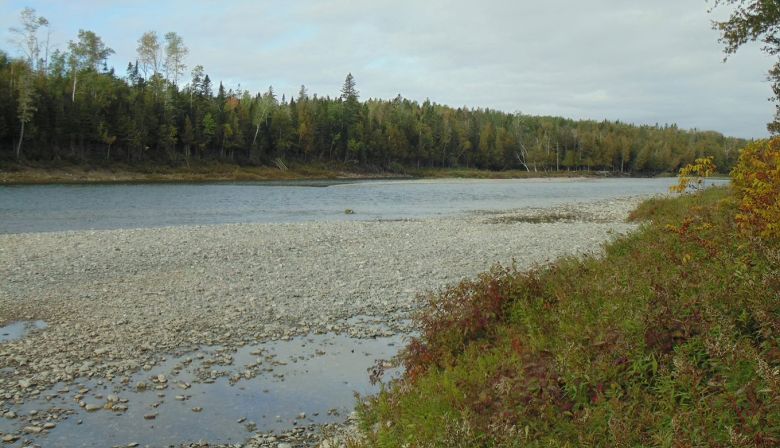
The APSB (Bonaventure River Anglers Association) are reporting 1,210 fish landed to September 18th consisting of 760 salmon which were released, and 450 grilse harvested.
To September 19th, 2020, for the season, 1,034 fish had been reported landed (720 salmon released and 314 grilse harvested).
Cumulatively to September 14th, 2019, 961 fish had been landed (771 salmon released, and 190 grilse harvested).
The fishway was shutdown for the 2021 season on September 16th. To that date, 781 salmon and 856 grilse were counted for a total of 1,637 fish.
1,745 fish, consisting of 922 salmon and 823 grilse had been counted through the fishway during the 2020 season.
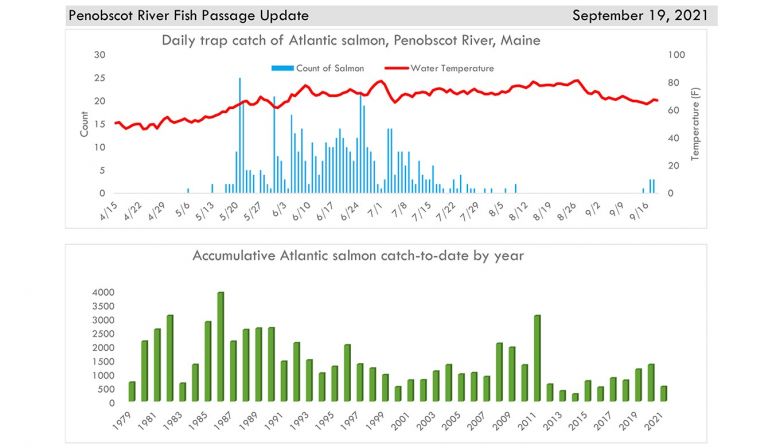
Penobscot
There have been 530 Atlantic salmon counted so far at the Milford Fishlift. This makes 2021 a somewhat disappointing year, but hopefully numbers will bounce back in 2022.
However, the Atlantic Salmon Federation also bases its approach to Atlantic salmon on the science behind the facts and the returns. Mortality at sea is the top mystery to be unravelled, and the harm from invasive species is not far behind.
Just back of this is the impact of open net-pens, as well as the leakage of juveniles from hatcheries into wild salmon rivers.
The south coast of Newfoundland rivers are noted for the “Threatened” designation applied to their Atlantic salmon populations. Yet time and again the salmon aquaculture industry plays fast and loose with best practices, and escapes and disease plus parasites are common.
Along with these is the inexplicable die-off of vast numbers of farmed salmon. The latest is at least 450,000 salmon in cages at and around a location called “The Gorge”, near the western edge of where open net-pen culture is undertaken.
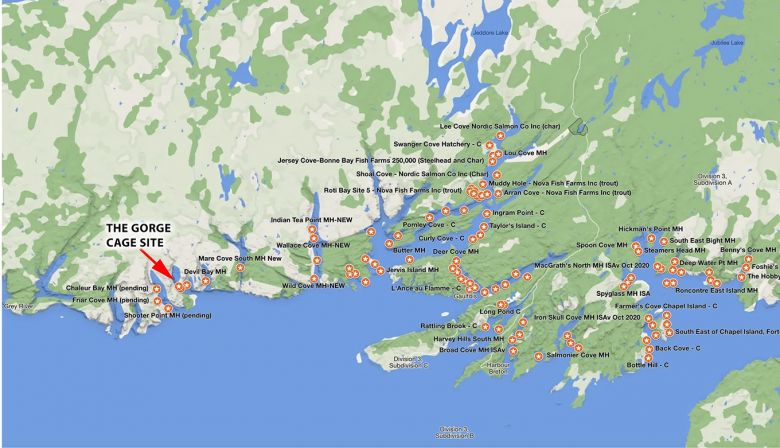
All of these numbers are vastly greater than the surviving numbers of wild Atlantic salmon, and certainly bring into question the directions the Government of Newfoundland is taking its inshore waters.
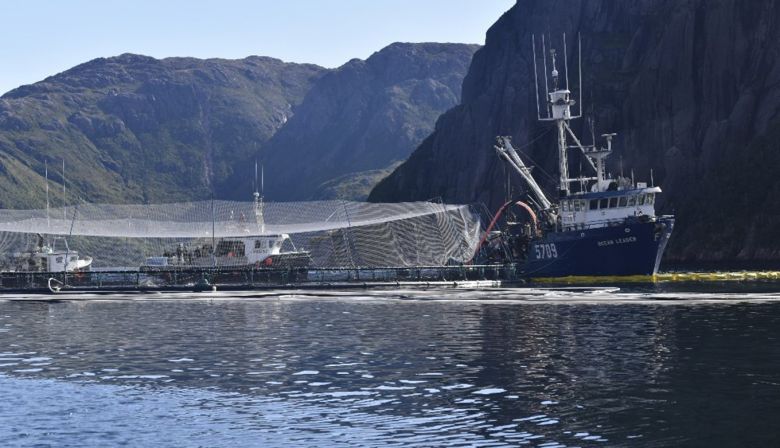
We are greatly concerned for the future of salmon runs in southern Newfoundland. They are already under stress from many factors, from mortality at sea to climate change. The added stresses on these populations from open net-pen aquaculture should not be accepted additional factors leading to the loss of wild Atlantic salmon.